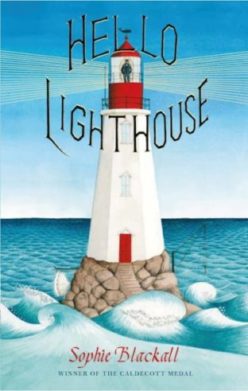Lighthouses such as the one depicted in this book still play an important role in ship navigation however few, if any, are still tended daily by a live-in lighthouse keeper. In this award-winning picture book, we see what life was like on a lighthouse. It was lonely as we recognise how lonely this keeper is by himself until his wife arrives on the tender, a boat that came every few months to deliver supplies and other things including the all-important oil for the light to keep the lighthouse going.
Life was not easy and there is a never-ending list of tasks for the keeper to undertake to keep the lighthouse operating 365 days a year. The light is a beacon of warmth and safety to all at sea and we see how important the lighthouse is even in thick fog when boats were warned by bells, or how sailors were rescued when disasters occur. As the seasons pass, we see thick ice, icebergs and whales passing, we see auroras and there is illness and the birth of a baby. Throughout the lighthouse keeper tends the lamp and writes in his logbook. Then comes the day when they have to say good-bye. The keeper’s work is done as the light becomes automatic, but it still beams its lifesaving light out to protect the sailors on their ships.
On the eight double page spreads, the lighthouse is positioned in the same spot providing an unchanging steadfastness and giving a stark contrast to the tumult and change in the patterns of the sea and the seasons. Circles and round shapes play a significant role in the illustrations. Lighthouses are traditionally round and this shape appears as a motif throughout providing different perspectives and views. There are round rooms, coils of rope and story images in circles, the curving of the waves as they crash and always the circle of the light.
The illustrations were done in Chinese ink and watercolour on hot press paper. They are highly detailed and historically accurate and provide interest and significance to the book’s design and layout. The book is elongated and narrower than usual reflecting the shape of the lighthouse and features a picture of the lighthouse on the spine. Aa the story concludes there is a gatefold page showing the lighthouse keeper and his family maintaining their love of the lighthouse from the mainland.
At the end of the book is ‘A Note from the Author’ giving historic details about manned lighthouses and a brief mention that the lighthouse the book was based on is on a tiny island at the northern tip of Newfoundland, Canada.
‘Hello Lighthouse’ was chosen as the 2019 American Library Association ‘Randolph Caldecott Medal’ for the most distinguished picture book for children and shortlisted in the 2020 CBCA Picture Book of the Year.

